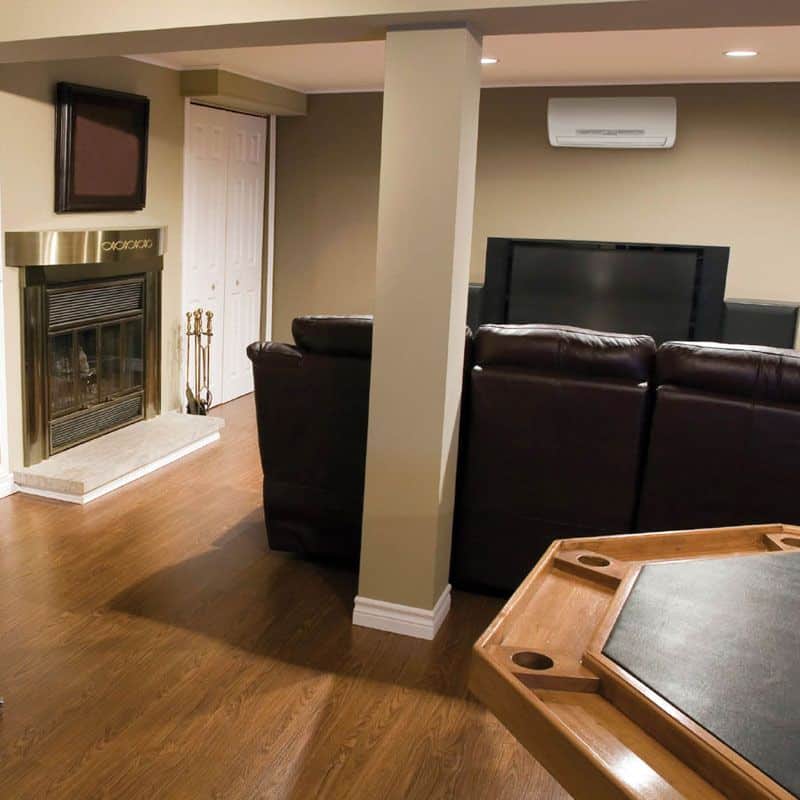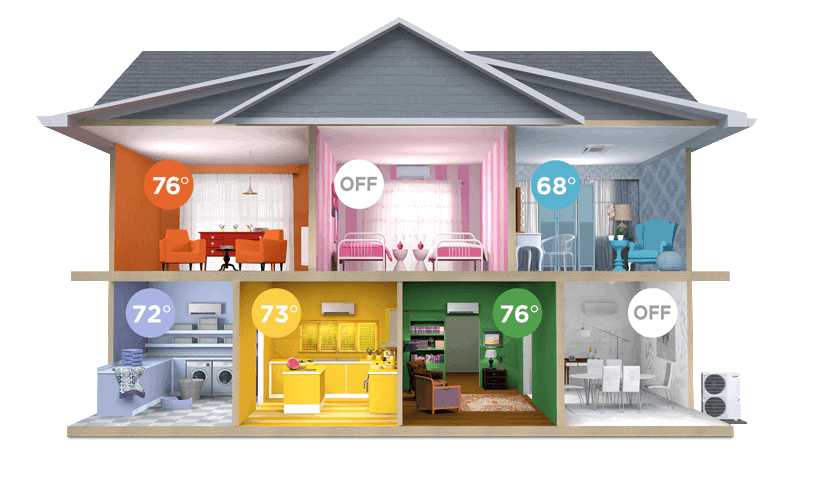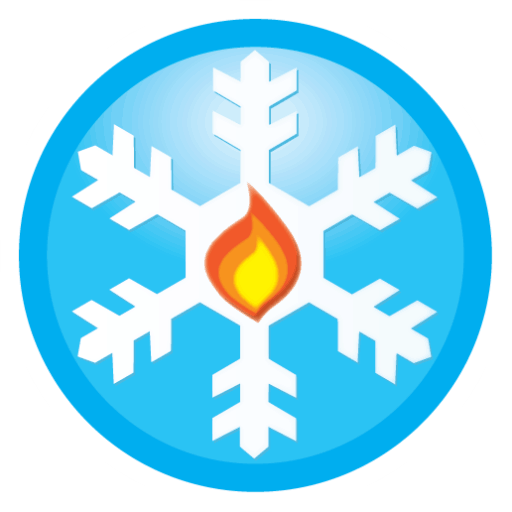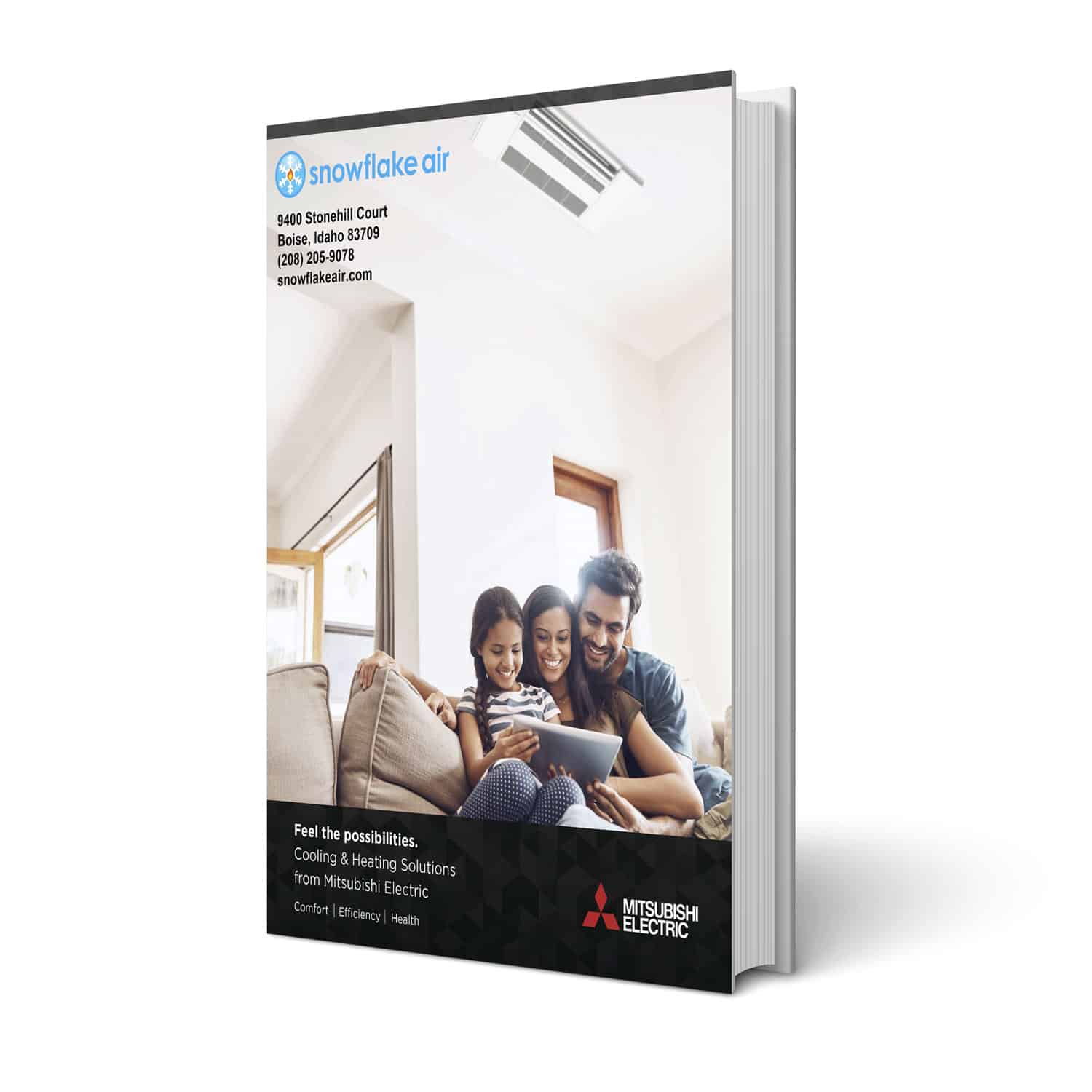 What’s worse: Waking up with cold feet and not wanting to brave the cold to start the day? Or, heading down to the kitchen and feeling like you’re in a sauna? When your home has uneven heating, that’s the choice you feel like you have to make every day.
What’s worse: Waking up with cold feet and not wanting to brave the cold to start the day? Or, heading down to the kitchen and feeling like you’re in a sauna? When your home has uneven heating, that’s the choice you feel like you have to make every day.
It doesn’t have to be that way.
One of the most common heating and cooling problems we hear about is that the bedrooms — or the second floor in general — are too cold in the winter.
Homeowners are often tempted to crank up the heat to make up for it.
But then they’ll end up with a first floor that’s way too hot. And a utility bill that’s way too high.
There are a few different ways to solve this problem. But, first, it helps to understand why it’s happening in the first place.
There are a few near-universal causes for the problem. But, every house is different, and so you need to figure out what’s happening, exactly, in your home.
Of course, we can’t tell you for sure what the best solution is for you without seeing your house and hearing about your exact concerns. But, we hope this article helps you understand what’s happening and start thinking about what solution would fit you best.
And, at the risk of spoiling the big surprise, we here at Snowflake Air most often recommend a ductless mini split to solve these problems. We’ll get into great detail about why we think they’re the best option today.
But for now, let’s start at the beginning: Why are those upstairs rooms too cold? Then we’ll talk about how to fix it.
Meanwhile, if this problem sounds all too familiar in your Treasure Valley home, reach out to us here at Snowflake Air! We offer free consultations to help you find the best way to make your home more comfortable in the winter.
Why The Upstairs Rooms Are Too Cold
If your upstairs rooms are colder than downstairs in the winter, you’ve got one or more things going on. The top three causes are:
- How Heat Rises
- Poor Insulation
- Ductwork Limitations
How Heat Rises
You’d think that heat rising would make your top floor warmer than the ones below it, right? Well, it doesn’t quite work that way. Not usually, anyway.
Yes, hot air rises. But, it doesn’t stop in your bedrooms. It keeps going. Because while heat rises, it also moves toward cold spots. And, the coldest area is outside. That’s where the warmth wants to go.
As a result, it finds any way out of your house that it can: an unsealed window, through the roof, whatever. That leaves you with less heat upstairs.
And, your thermostat doesn’t account for this. As long as the first floor, where the thermostat is located, feels warm enough, the furnace shuts off. That leaves your bedroom too cold at the same time.
Poor Insulation
We mentioned how heat rises and keeps going. Well, that’s even more of a problem if you don’t have good insulation in your attic or crawl space.
If your home is well-insulated, you’ll retain more of your heat than if it’s not adequately sealed. The same goes for drafty windows, holes in the roof, or other “leaky” spots up on the second floor.
Ductwork Limitations
If your home uses forced air through ductwork and vents, there’s a good chance that the system isn’t equipped to give your home the heating it needs.
You lose pressure the further from the furnace you get. It gets pretty bad if you’ve got a home over, say, 2,500 square feet. Or a split level. The air pressure drops significantly by the time the heat reaches the bedrooms.
This problem is more common in the Boise, ID area than in towns like Donnelley or McCall. Those areas usually have pellet stoves or baseboard heat.
But, your average suburban home, especially one built a few decades ago, relies on ductwork to move heat around the house. And, they’re not always up to the task.
The Problem With One Thermostat
A lot of the problems with second-floor heating occur because there’s only one thermostat. And, it’s on the first floor.
As a result, you never have an accurate gauge of how hot or cold it is up there. But, the first floor is likely warmer. So, the thermostat shuts off the furnace before giving the second floor the treatment it needs.
You could crank up the heat to warm the second story. But, that overheats the first floor. Even the basement can get too hot when you’re trying to heat the upstairs.
Zoned Heating

Fixing ductwork or ripping open walls to add insulation are costly and invasive propositions. Not only are you paying a lot of money to correct the problem. You’re also dealing with a lot of construction in the house.
Instead, you’re better off going with zoned heating.
That’s when you have more than one thermostat in the house. This way, you’re controlling each area, or zone, of your home individually. You can increase the heat upstairs without making your downstairs unbearably hot.
How To Zone Your Heating
Here are three of the most common ways to get zoned heating — and or recommendation for the best option:
- Baseboard Heating
- Dual Furnace
- Ductless Mini Split
Baseboard Heating
If you have baseboard heating in your home — and this is pretty common in the Treasure Valley — then you’re already zoning your heating! If you’re still having problems, however, read on for a more modern solution.
Dual Furnace
Popular for new construction and larger, luxury homes, you can have one furnace for the first floor and a second for upstairs. This way, you get two thermostats. That way, you can increase the heat in the bedrooms without making the first floor a sticky mess.
It works well enough, but it’s expensive and uses a lot of energy. Plus, you only get two controls: Upstairs and downstairs. With baseboards or mini splits, each room has its own control.
Ductless Mini Split
Our go-to recommendation for heating your upstairs is with a ductless mini split. These systems are amazingly customizable: You can use them for one room, the entire house, or anything in between.
They work separately from your central heating, so you can supplement the rooms that need treatment. Or overhaul the whole house. Since they don’t require ductwork, installation is quick, easy, and doesn’t make a big mess in your home.
And, since they use electricity, you don’t need to worry about converting your home to natural gas. The power already coming into your home is more than enough to keep these energy-efficient systems working!
Read More: How Do Mini Splits Work?
Mini Split Installation In Boise, ID
Snowflake Air is a Mitsubishi Elite Diamond Dealer and a bona fide authority when it comes to ductless heating and cooling and mini split installation in the Boise, ID area and up as far as McCall, Donnelley, and Cascade. If you’d like to learn more about these systems, click below or call us at (208) 205-9078.



